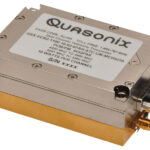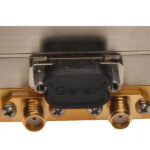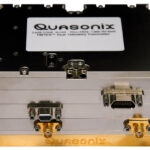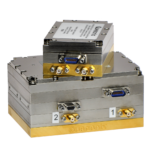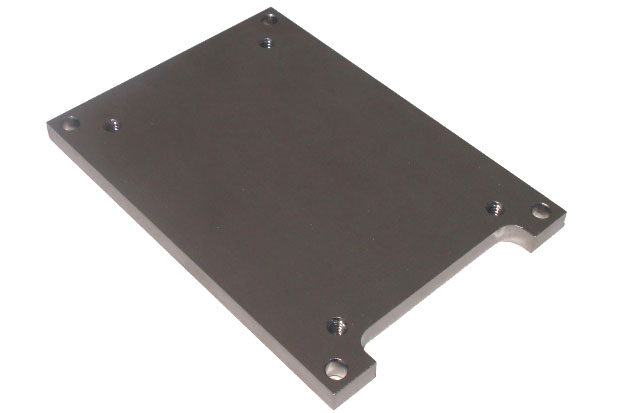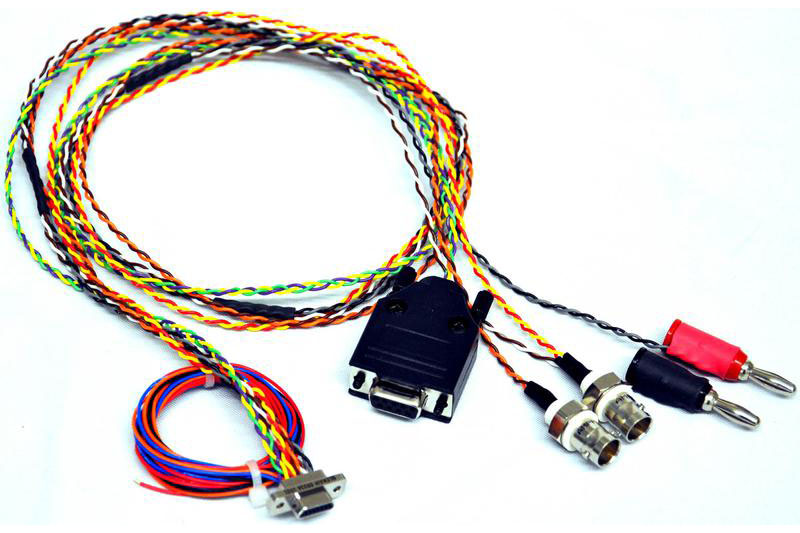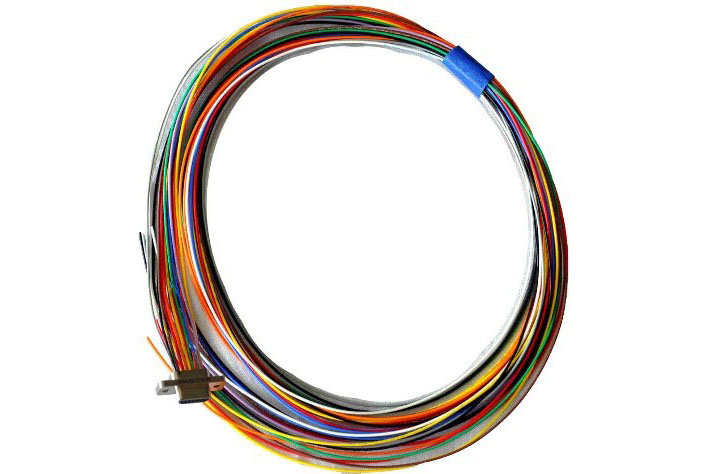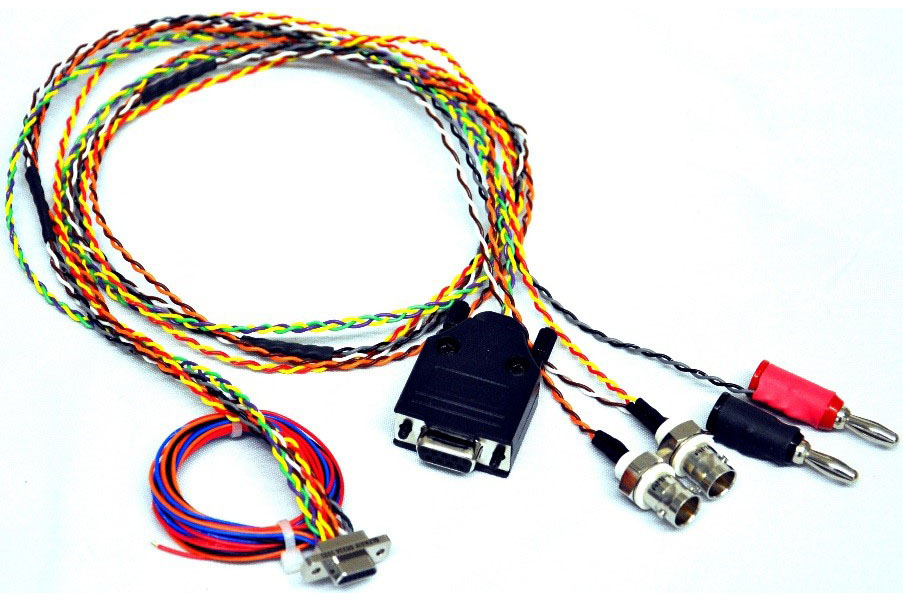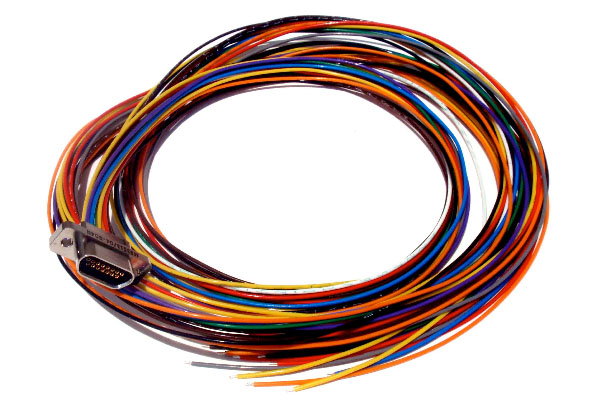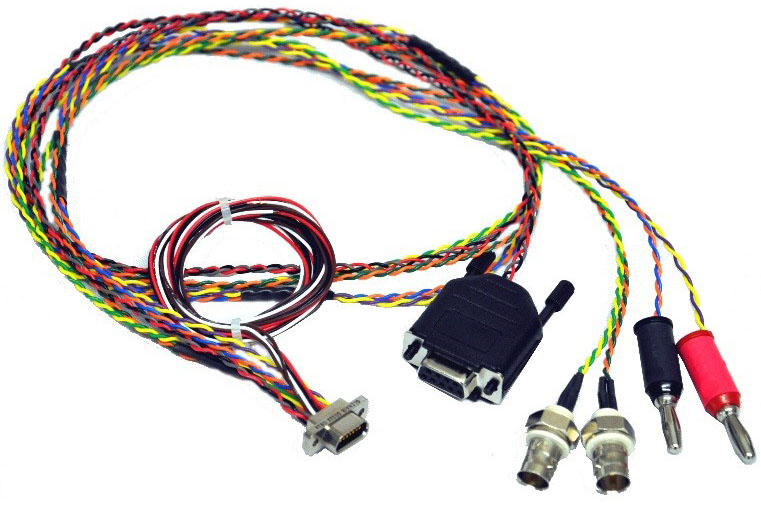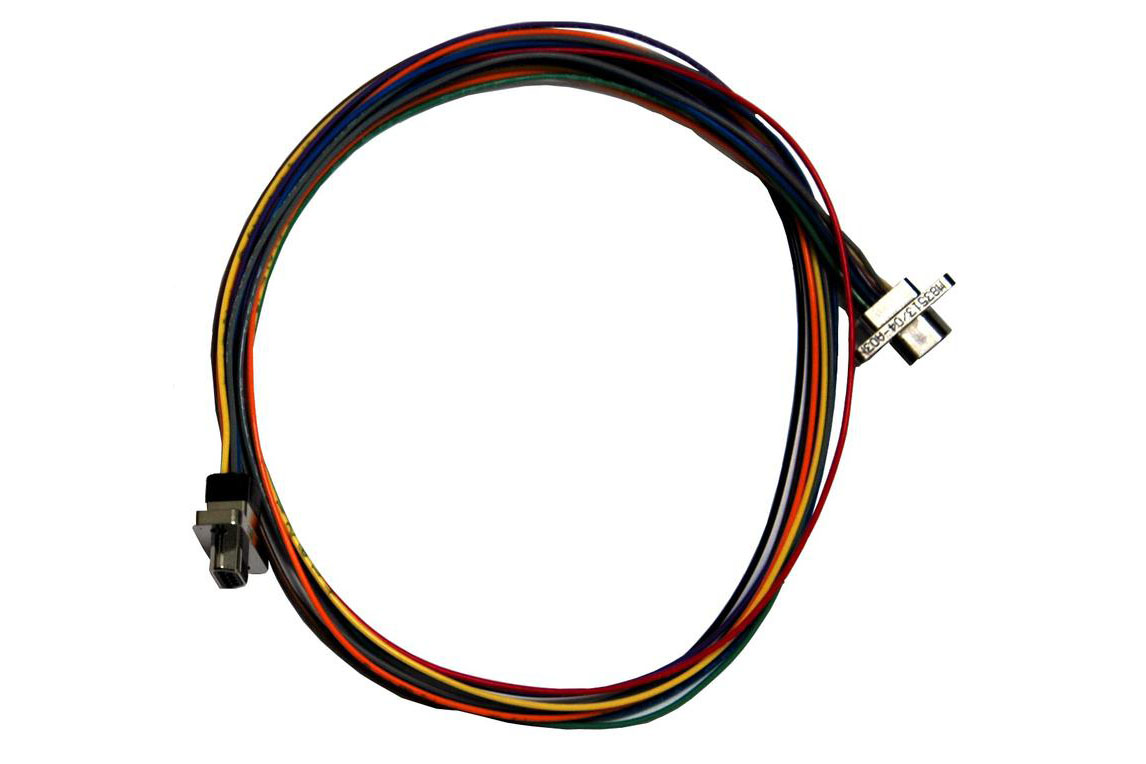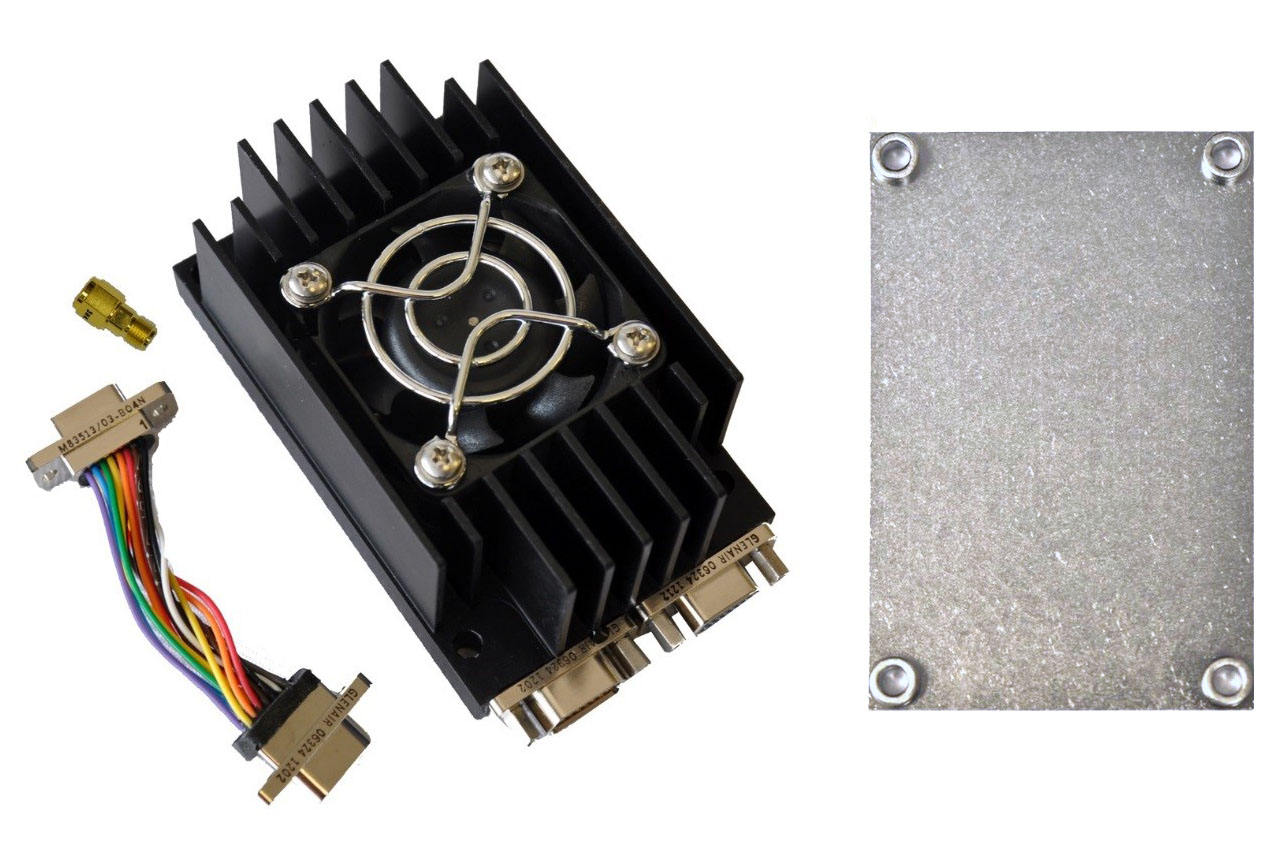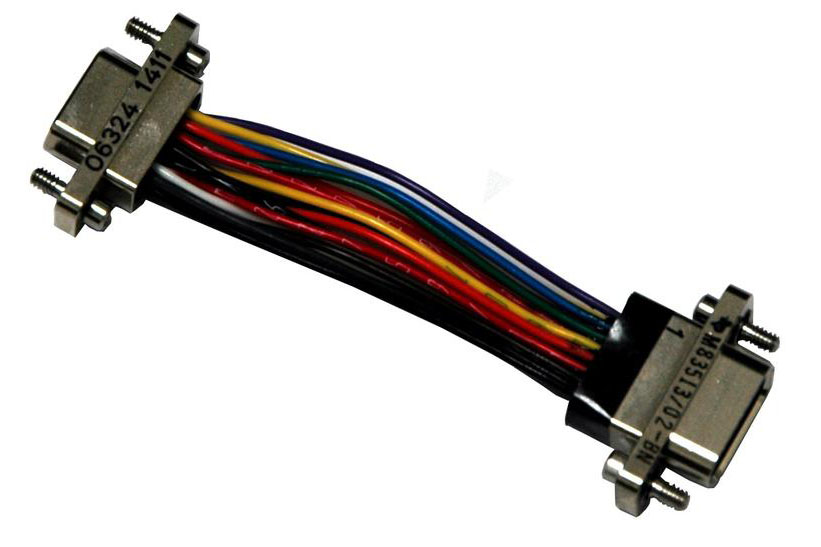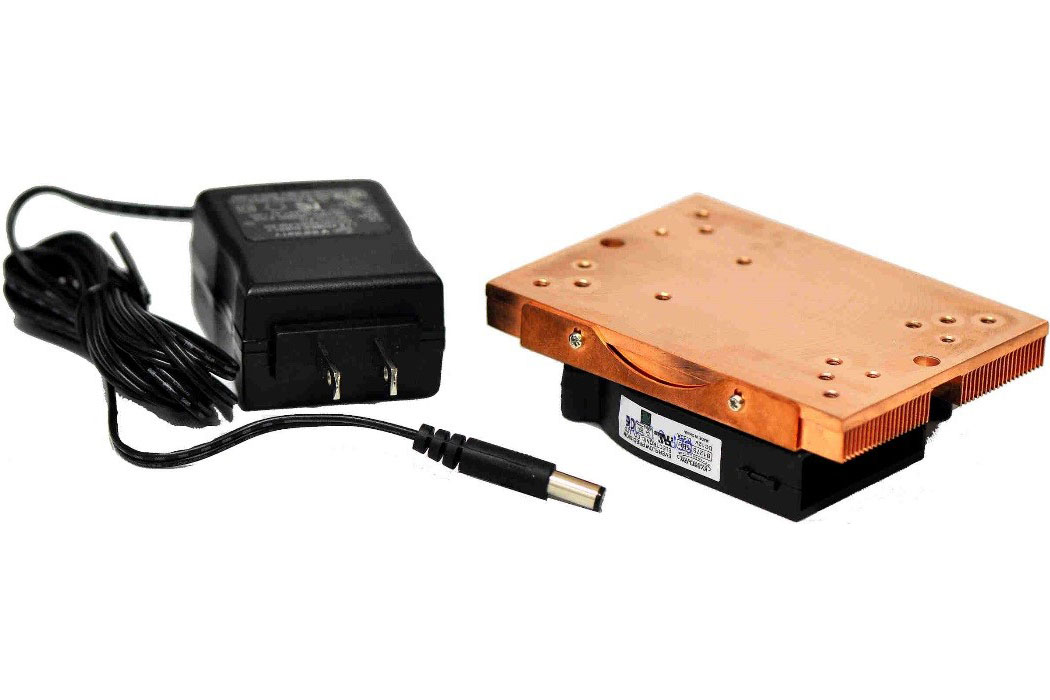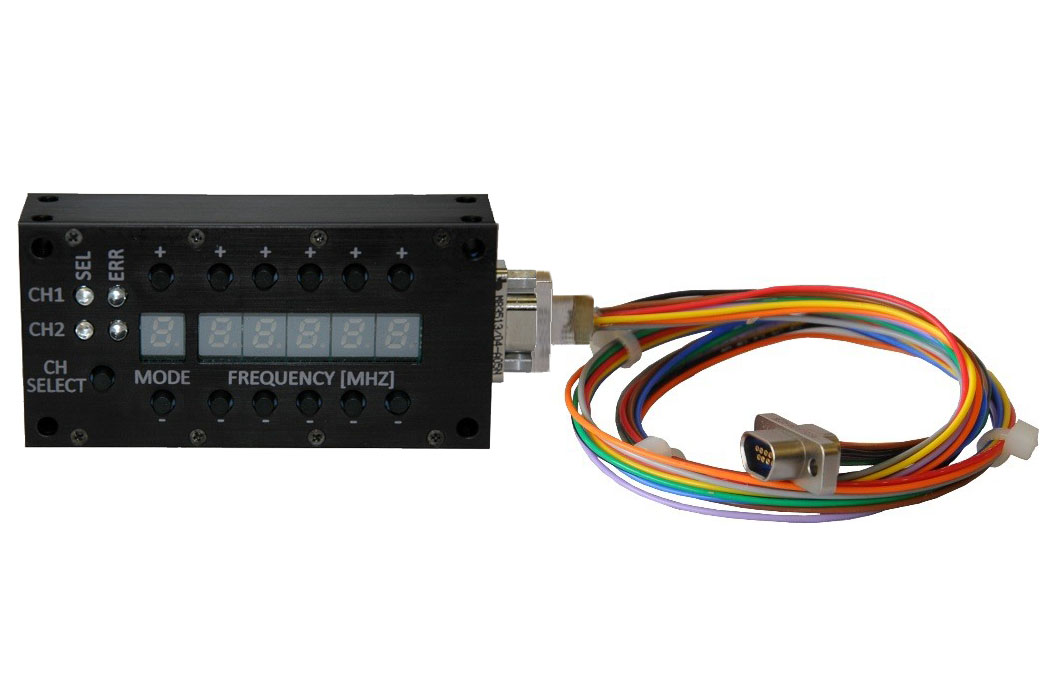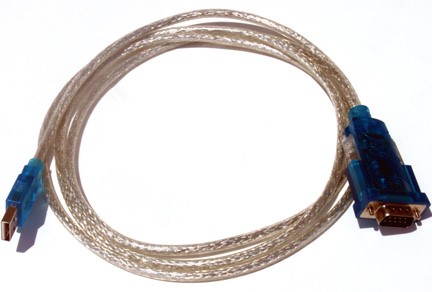
Ultimate Bitstream Accuracy Starts Here
Quasonix digital multi-mode dual telemetry transmitters provide the flexibility of two high performance, independent transmitters in one package. The standard 2.0 inch by 3.0 inch design includes a single MDM-15 interface as a primary connector for power, clock and data, and serial communications, while providing two separate RF outputs via SMA connectors. This configuration is ideal for two antenna applications that utilize Space-Time Coding (STC) or Frequency Diversity. The transmitters are designed to transmit airborne telemetry data from a test article to ground stations.
A legacy side-by-side design is employed in applications requiring bands that currently are not available in the Quasonix TIMTER™ Multi-mode Dual Telemetry Transmitter.
ARTM Modulations
Quasonix transmitters offer three different modulations of increasing spectral efficiency – PCM/FM, SOQPSK-TG, and Multi-h CPM – also known as ARTM Tiers 0, I, and II, at standard bit rates from 0.1 to 28 Mbps (0.05 to 14 Mbps for PCM/FM). Options (HR/LR) are available to extend the upper limit to a maximum of 46 Mbps (23 Mbps for PCM/FM) and the lower limit to a minimum of 50 kbps (25 kbps for PCM/FM). With bandwidth at a growing premium in flight test telemetry, you can take advantage of 2 to 2.5 times the data capacity of the legacy PCM/FM waveform with SOQPSK-TG and Multi-h CPM.
Product Configurations
RF Output Power
- 10 W per output
Frequency Band
- Lower S (2200.5 MHz – 2300.5 MHz)
- Mid C and Euro Mid C (5091.0 MHz – 5250.0 MHz)
- Lower C (4400.0 MHz – 4950.0 MHz)
- C with Mid C (4400.0 MHz – 4950.0 MHz) and (5091.0 MHz – 5150.0 MHz)
- C and Euro Mid C (4400.0 MHz – 4950.0 MHz) and (5091.0 MHz – 5250.0 MHz)
- Lower L (1435.5 MHz – 1534.5 MHz)
- Upper S (2300.5 MHz – 2394.5 MHz)
- S (2200.5 MHz – 2394.5 MHz)
Baseband Interface
- TTL – 10k ohms to ground
- TTL – 75 ohms to ground
- TTL – Selectable between 75 ohms to ground and 10k ohms to ground
- TIA/EIA-422 (RS-422) – 120 ohms differential
- TIA/EIA-422 (RS-422) – 120 ohms differential, even when unit is powered off
- Dual-mode – Selectable between TTL (terminated 10 ohms to ground) and RS-422 (terminated 120 ohms differential)
- Dual-mode – Selectable between TTL (terminated 75 ohms to ground) and RS-422 (terminated 120 ohms differential)
- Tri-mode – Selectable between TTL (terminated 75 ohms to ground), TTL (terminated 10k ohms to ground), and RS-422 (terminated 120 ohms differential)
- LVDS (Low Voltage Differential Signal)
Other Highlights
- Many Output Power Options with Exceptional Efficiency
- Outputs from 5 W to 10 W, per output, and optional variable power – all while drawing less current than the competition
- Automatic Data Rate Tracking
- As long as the external clock remains within the specified data rates above, the transmitter will automatically adjust to it with no programming or configuration required
- Bypassable Randomizer
- Standard IRIG-106 fifteen-stage randomizer, for applications with non-encrypted data
- Intuitive Control
- Straightforward configuration and control and platform-independence with serial terminal programming
Product Literature
| Type | Title | Version | File Size | Updated | Length | Description |
|---|---|---|---|---|---|---|
| Data Quality Magic | 2021.04.21 | QUASONIX CONNECTION April, 2021 Topics: – Data Quality Magic – A Better Two-Antenna Solution – SAVE on our Latest RDMS™ Features | |||
| TIMTER™ Dual Transmitter Datasheet | 2023.09.24 | Features, popular options, and specifications for Quasonix’s dual telemetry transmitters, which optionally support Low-Density Parity Check (LDPC) Coding and are Space-Time Coding (STC) capable. |
Available on Most Dual Transmitters
- Space-Time Coding (STC)
- Low Density Parity Check (LDPC) Error Correction System
- Wide input voltage range
- Clock generator output to baseband connector
- Randomizer output to baseband connector
- Dual power (two settings, “high” and “low”)
- Variable power (32 discrete power level settings, spanning 24 dB)
- Clock-free baseband interface
- Frequency offset
- High bit rate option increases maximum bit rate to 46 Mbps (23 Mbps for Tier 0)
- Low bit rate option decreases minimum bit rate to 50 kbps (25 kbps for Tier 0)
- Limited current in RF Off state
- Modulation scaling
- Hardware presets (PS2, PS4, PS8, or PS16)
- Automatic carrier wave output
- Adapter plate
Option Literature
| Type | Title | Version | File Size | Updated | Length | Description |
|---|---|---|---|---|---|---|
| SOQPSK with LDPC ITC Paper | 2013.10.21 | “SOQPSK with LDPC: Spending Bandwidth to Buy Link Margin,” by Terry Hill & Jim Uetrecht; presented at ITC 2013. | |||
| Space-Time Coding ITC Paper | 2014.10.20 | “Space-Time Coding Solution to the Two-Antenna Interference Problem,” by Mark Geoghegan & Louis Boucher; presented at ITC 2014. | |||
| STC vs. Traditional Two-Antenna Solution | 2020.01.08 | 6:30 | Recording showing how Space-Time Coding eliminates signal fades inherent in a normal two-antenna solution. (Used in TM Smorgasbord training, Day 3.) | ||
| Receiver and Transmitter Space-Time Coding Datasheet | 2022.11.19 | The Quasonix Space Time Coding Solution eliminates link outages caused by the “two-antenna problem,” improving behavior of received signal power and overall link availability. | |||
| Receiver and Transmitter Low-Density Parity Check Datasheet | 2023.10.12 | The Low Density Parity Check (LDPC) Forward Error Correction mode improves link margin equivalent to nearly tripling the operating distance on your telemetry link. |
Accessories
| Image | Item | Description |
|---|---|---|
| Adapter Plate for 2.5″ x 3.5″ Footprint | This adapter plate allows for the standard 2” x 3” TIMTER™ to be mounted to the larger 2.5” x 3.5” mounting surface occupied by other industry transmitters. Part Number: QSX-AP96 | |
| Heat Sink Thermal Pad | 2″ x 3″ Thermal Pad, Bergquist QPAD II, 0.006″/0.152mm thick, for use with heat sinks. Part Number: QSX-AC-TXTP | |
| MDM-15 RS-422 and TTL Wiring Harness | Female MDM-15 connector wiring harness with banana plugs for power and ground, BNC connectors for both RS-422 and TTL clock and data, and a DB-9 connector for serial control. Part Number: QSX-AC-MDM15-HARNESS-PIN-VR | |
| MDM-15 RS-422 Connector with Pigtails | Female MDM-15 connector with 36-inch pigtails. For RS-422 clock and data. Part Number: QSX-AC-MDM15-36-PIN | |
| MDM-15 RS-422 Wiring Harness | Female MDM-15 connector wiring harness with banana plugs for power and ground, BNC connectors for RS-422 clock and data, and a DB-9 connector for serial control. Part Number: QSX-AC-MDM15-HARNESS-PIN | |
| MDM-15 TTL Connector with Pigtails | Male MDM-15 connector with 36-inch pigtails. For TTL clock and data. Part Number: QSX-AC-MDM15-36-SOCK | |
| MDM-15 TTL Wiring Harness | Male MDM-15 connector wiring harness with banana plugs for power and ground, BNC connectors for TTL clock and data, and a DB-9 connector for serial control. Part Number: QSX-AC-MDM15-HARNESS-SOCK | |
| MDM-9 Female to MDM-9 Male Harness | MDM-9 Female to MDM-9 Male Harness, 18 inches. Part Number: QSX-AC-MDM9MF-HARNESS | |
| Transmitter Airborne IntelliCool™ Heat Sink | Fan-cooled heat sink for 2″ x 3″ transmitters for airborne applications. Operates from 21 VDC to 34 VDC, powered from existing transmitter wiring. Part Number: QSX-AC-HS-28V-SP | |
| Transmitter Airborne IntelliCool™ Heat Sink Wiring Harness | External wiring harness for fan-cooled heat sink for 2″ x 3″ transmitters. For airborne applications. Part Number: QSX-AC-HARNESS-HEATSINK-TX | |
| Transmitter Bench Heat Sink | Fan-cooled, AC-powered heat sink for transmitters. Used for testing at the bench; not airborne approved. Part Number: QSX-AC-32-HS-12V (formerly QSX-TIMTER-HS-12V). | |
| Transmitter Digital Frequency and Mode Switchbox | Transmitter digital frequency and mode switch box with MDM-9 connector allows configuration without the use of a computer. Part Number: QSX-AC-DSWBX | |
| USB to Serial Converter Cable | Allows for transmitter configuration using a computer that has a USB port but no serial ports. Part Number: QSX-AC-USBSER-CONV |
Accessory Literature
| Type | Title | Version | File Size | Updated | Length | Description |
|---|---|---|---|---|---|---|
| Transmitter Heat Sinks Datasheet | 2023.11.17 | Quasonix offers different types of integrated and add-on heat sinks, as described in this datasheet. Please contact Quasonix for heat sink recommendations for your particular TIMTER™ transmitter. |
User Manuals and Guides
| Type | Title | Version | File Size | Updated | Length | Description |
|---|---|---|---|---|---|---|
| Transmitter SMA Replacement Guide | 1.0 | 2022.02.01 | Simple instructions for the field replacement of an SMA (F) connector in a Quasonix TIMTER™ or Dual TIMTER™ telemetry transmitter. | ||
| TIMTER™ Dual Transmitter Manual, Firmware v2 | 1.5.14 | 2023.11.22 | Installation and operation of Quasonix’s TIMTER™ Multi-Mode Dual Telemetry Transmitters, firmware version 2.xxx (required for transmitters with the -D2 option). Find firmware version with VE command or in startup banner. | ||
| J/F 12 Files (1 MB Download) | 2010.07.29 | These files address the applicability of the US Government’s J/F 12 and DD Form 1494 classification documents to Quasonix’s TIMTER™ transmitter product line. | |||
| Receiver and Transmitter Low-Density Parity Check Guide | 1.1.1 | 2024.01.26 | This technical guide introduces Low-Density Parity Check (LDPC) encoding, its uses and benefits, the Quasonix products it is available for, and considerations for optimal set-up and use. | ||
| Transmitter RF Troubleshooting Guide | 1.2 | 2019.07.25 | Quick, three-part test to verify that the RF output on a Quasonix telemetry transmitter is working correctly. | ||
| Transmitter Overtemp Control Guide | 1.0 | 2018.10.26 | How to modify the internal overtemperature (OT) setting using the OC command. This applies to all Quasonix telemetry transmitters. | ||
| TIMTER™ Dual Transmitter Manual, Firmware v1 | 1.6.16 | 2023.11.22 | Installation and operation of Quasonix’s TIMTER™ Multi-Mode Dual Telemetry Transmitters, firmware version 1.xxx. Find firmware version with VE command or in startup banner. | ||
| Transmitter Binary Protocol Tester Manual | 1.0.4 | 2021.02.04 | How to test the binary protocol of Quasonix telemetry transmitters using Binary Protocol Tester software provided by Quasonix. | ||
| Transmitter Binary Protocol Manual | 4.0.3 | 2021.02.03 | The binary serial protocol is designed to facilitate efficient machine to machine communication. This manual defines the binary protocol version 1.009. | ||
| IRIG 106-13, Appendix N Interpretation | 1.2 | 2020.07.14 | Explains Quasonix’s standard transmitter protocol and how transmitters with the C7 option (IRIG 106-07 control protocol) will behave differently. | ||
| TIMTER™ Dual Transmitter Manual (Legacy) | 1.3.5 | 2022.01.31 | Installation and operation of Quasonix’s Legacy Dual Telemetry Transmitters. |
Software Downloads
| Type | Title | Version | File Size | Updated | Length | Description |
|---|
Quasonix Product Lines
Thermal Considerations
It is important that the transmitter’s bottom surface (on the face opposite the product label) be securely attached to a baseplate capable of dissipating the power produced by the transmitter model in use. This mounting baseplate must be flat, smooth, and clean.
ATTENTION: You must operate the transmitter with a proper heat sink. Failure to do so may lead to permanent damage to the unit and will void the warranty. Overheating can occur in a matter of seconds when a transmitter is not properly heat-sinked. In absolutely no case should any type of stickers or labels be applied to the bottom surface of the transmitter.
The heat sink required for a particular transmitter depends heavily on the installation. Factors such as altitude, air temperature, air flow, and mass of the mounting surface all have a substantial impact on the flow of heat away from the transmitter. Quasonix offers several types of integrated and add-on heat sinks. Please contact support@quasonix.com for the power dissipation required and heat sink recommendations for your particular TIMTER™ transmitter.
Regardless of the heat sink, Quasonix strongly suggests using a thermal pad, such as Q-Pad® II from Bergquist. See the Henkel site for more information.

